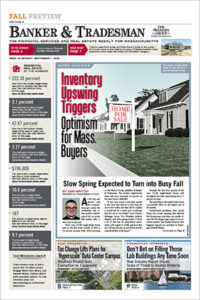
Lew Sichelman
Would-be sellers who have taken their houses off the market should be ready for an all-out blitz this spring from agents looking to relist their places.
There are all kinds of reasons to stop trying to sell your house: Perhaps there was very little interest, you couldn’t get the price you wanted or you were dissatisfied with your agent.
Whatever the reason, tens of thousands of listings expire each year, and agents view them as easy pickings. Denise Lones, an agent and industry coach, wrote in a blog post that working with expired listings is like “picking nice juicy ripe grapes off a vine.”
For one thing, these listings are easy to find. All agents have to do is comb their local multiple listing services for properties that haven’t been re-upped.
It’s a convenient way to drum up business when needed, wrote Lones: “It is an easy faucet to turn on and off. When you need business, turn it on. When you have too much, turn it off.”
Sometimes, of course, sellers have had enough and don’t want to put their houses back on the market. But that won’t stop some agents from trying. Whether it be snail mail, email, the phone or in person, they’ll try to connect to show these sellers why the next time around will be different.
Lenders Crusade Against ‘Trigger Leads’
If you’ve been inundated with emails, texts and phone solicitations after applying for a mortgage, here’s why: Your lender’s competitors regularly purchase customer information from the credit agencies lenders use.
The practice is known as “trigger leads” because your application triggers a barrage of rival offers. It is frowned upon by many in the mortgage community, and legislation to put an end to it was working its way through Congress last fall. Law or not, supporters have vowed to keep fighting.
“This must stop,” wrote Bob Broeksmit, president and CEO of the Mortgage Bankers Association, in a statement on the organization’s website.
Not only can the practice cause emotional strain on consumers, but it is also sometimes fraudulent. Worse, perhaps, it serves to undermine the trust that borrowers place in their loan officers and brokers.
“The mortgage industry depends on referrals and repeat business, which we have always enjoyed,” said a Mississippi lender in the MBA statement. “This is nearly a bygone notion thanks to trigger leads.”
Added an Oregon colleague: “I pride myself in taking great care of my customers. Trigger leads are affecting my borrowers and therefore my reputation.”
Tariffs’ Outsized Impact on Housing
There are few certainties about the tariffs the Trump White House has attempted to implement, but during his campaign, the president pledged to place tariffs ranging from 10 percent to 20 percent on imported goods, with a 60 percent tariff on imports from China. Such fees would have a massive impact on the homebuilding industry.
According to the National Association of Home Builders, in 2023, around $184 billion of goods were used to construct both new single- and multi-family houses. Of that, $13 billion worth – about 7 percent – was imported.
Commodities from China accounted for 27 percent of the imported total, while products from Mexico and Canada, two other countries targeted by the new president, accounted for 11 percent and 8 percent, respectively.
Though Trump disagrees, most economists maintain that a tariff is basically a tax on an imported good, meaning the company or person who imports an item pays an additional tax for doing so. An example from an NAHB press release: “Say a business in the United States needed to purchase a $100 worth of screws from China. With a 60 percent tariff, the business would then need to pay an additional $60 to the U.S. government to receive the screws. The exporter in China would still receive the $100 from the business and not pay the added tariff costs.
“The tariff cost falls on the importer, who would absorb the higher costs through lower profit margins or raising their own prices for consumers,” explains NAHB.
By NAHB’s estimates, a 10 percent overall tariff with a 60 percent tariff on goods from China “would result in a $3.2 billion increase in the cost of imported building materials used in residential construction.”
Breaking it down further, household appliances would get the largest cost hike, since 54 percent of those imported come from China. Some 70 percent of sawmill and wood product imports, which are already subject to tariffs, come from Canada, and 71 percent of lime and gypsum products come from Mexico.
Beware ‘Phantom Inventory’
Beware of “phantom inventory,” which makes it look as though the market is ripe with houses for sale. In fact, many properties are sitting stagnant because they are overpriced, making the market appear far healthier than it really is, said Glenn Phillips of Lake Homes Realty, a multi-state brokerage.
Odeta Kushi, deputy chief economist of First American Financial Corporation, agrees that more inventory doesn’t necessarily mean an increase in market activity.
“In some cases, higher active inventory levels may be the result of properties lingering unsold due to factors like overpricing, poor condition or decreased buyer demand,” wrote Kushi in a blog post. “Indeed, rising active inventory may mean demand has cooled, and homes are taking longer to sell.”
Lew Sichelman has been covering real estate for more than 50 years. He is a regular contributor to numerous shelter magazines and housing and housing-finance industry publications. Readers can contact him at lsichelman@aol.com.






